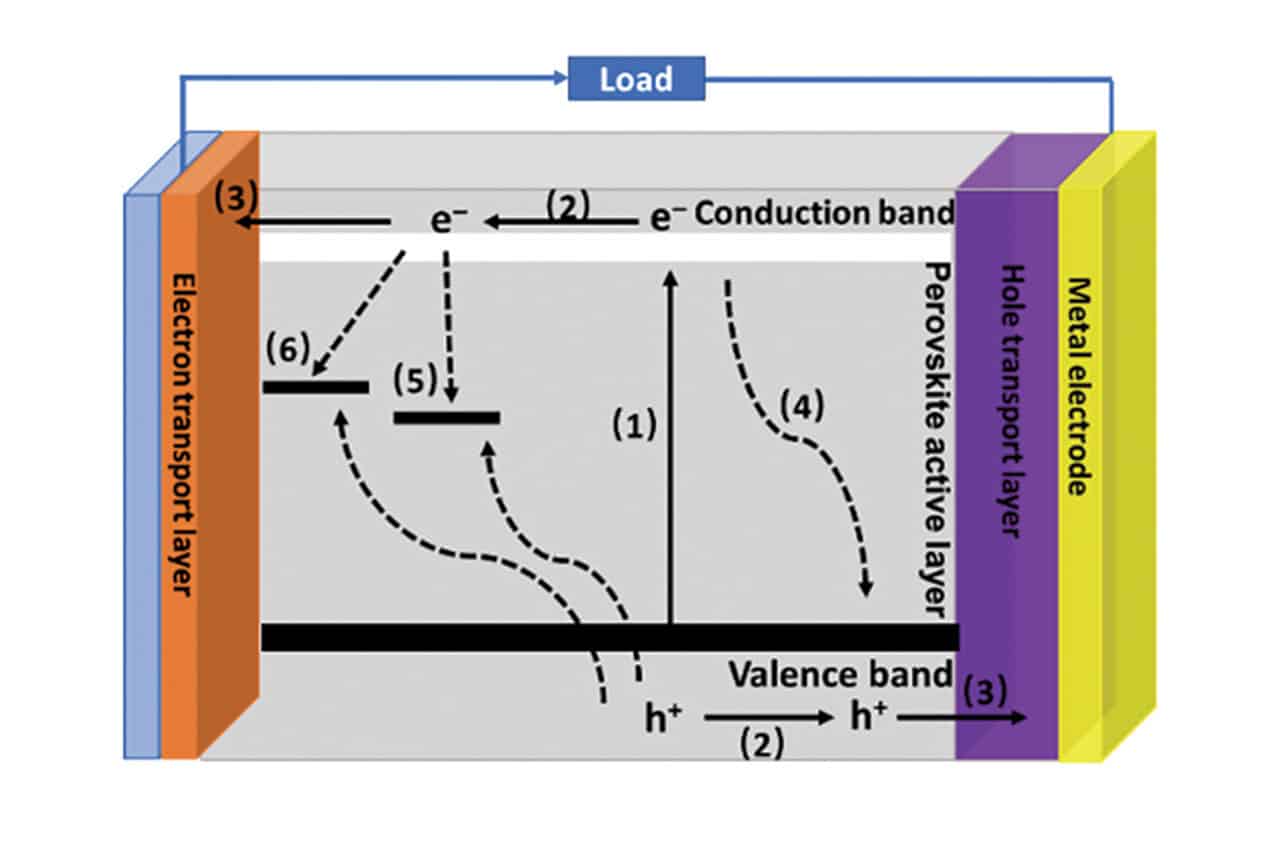
Flexible perovskite solar cells, a new class of photovoltaic devices with low weight, high flexibility, and conformability, have attracted growing attention for portable electronic products. The interface is crucial in perovskite solar cells for both photovoltaic efficiency and operational stability. A high-quality interface could be obtained through interface engineering.
Now, researchers from the Beijing Institute of Technology have summarized the degradation mechanisms and reviewed interfacial engineering with an emphasis on their effects on flexible perovskite solar cells.
“For the perovskite film, there are some factors influencing the intrinsic material stability,” said paper author Qi Chen. “(a) Stress would accumulate with temperature changes because of mismatched lattice and thermal expansion coefficients. It brought about delamination or accelerated decomposition. (b) Both water vapor and oxygen could have an irreversible reaction with the perovskite crystal. (c) Illumination causes the weak link in the perovskite or adjacent layers to break.”
Chen explained that besides the above stabilizing factors of the rigid devices, the stability of f-PSC is affected by other conditions. “Interface modification can passivate defects, improve interfacial adhesion, suppress ion migration, optimize band structure and regulate residual stress,” Chen said. “Based on the latest research progress, we summarize the application of interface modification in flexible perovskite solar cells.”
For the hole and electron transport layers, Interface Modification can increase the ability of the transport layer to block water and oxygen. It can also reduce the interface recombination by controlling the SnO2 nanocrystals, which is the key to enhancing device performance.
As for the active layer, the rough morphology of the flexible substrate directly affects the quality of the perovskite film, and the deep energy level defects inside and on the surface lead to increased interfacial nonradiative recombination. The Interface Modification not only improves the quality of the perovskite film but also improves the interfacial adhesion and the flexibility of the film, thus improving the performance of the cell. Additionally, the robustness, conductivity, and transparency of flexible electrodes can be improved by interfacial engineering.
“To further improve the efficiency and stability of f-PSCs, the complex interplay between those different interfaces should be studied in detail,” Chen said. “Interfacial engineering plays a critical role in the optoelectronic performance of f-PSCs. We systematically investigate the influence of the flexible substrate on charge extraction, charge transportation, and charge recombination in f-PSCs. A deeper understanding of interfacial charge dynamics is conducive to figuring out the degradation mechanism of f-PSC.”
“Despite significant progress in recent years, f-PSCs have to reach large-scale production and commercial operation. Therefore, interface engineering is still the key way to solve the issues plaguing the functionality and operation of f-PSCs,” Chen said.
Journal reference:
- Jie Dou and Qi Chen. Interfacial Engineering for Improved Stability of Flexible Perovskite Solar Cells. Energy Material Advances, 2022; DOI: 10.34133/energymatadv.0002
Interfacial engineering for improved stability of flexible perovskite solar cells
Source: Tambay News

0 Comments